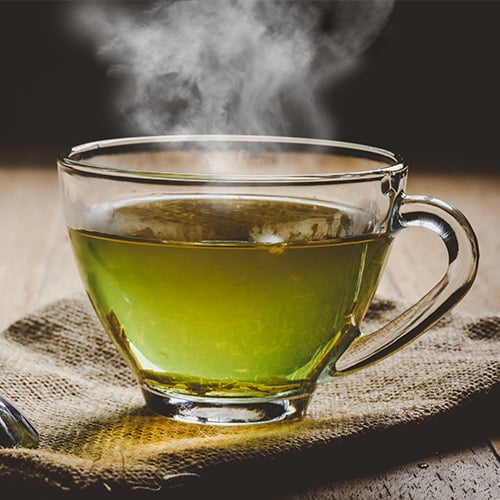Matcha vs Green Tea
Last updated on Jul 31, 2025Jason KurtzThough matcha and green tea are often confused for one another, they are distinctly different beverages. Both drinks have historical roots that trace back to Asia, particularly China and Japan. While matcha is relatively new to mainstream Western markets, both beverages are highly sought after, particularly in cafes and coffee shops. If you plan on offering these beverages on your menu, you and your staff must build an understanding of what sets them apart.
Difference Between Matcha and Green Tea
The key differences between matcha and green tea lie in their cultivation, preparation, and flavor. By evaluating these factors, you can make an informed decision on which beverage best suits your establishment's offerings and appeals to your customer base.
1. Cultivation

Matcha and green tea, although both derived from the Camellia sinensis plant, commonly known as the tea plant or tea shrub, undergo vastly different cultivation processes. Matcha is created from tea plants that are intentionally grown in the shade. This protects the theanine present in the leaves, resulting in a vibrant green hue. The leaves are harvested by hand, and then their stems and veins are carefully removed. Finally, they are ground into the fine matcha powder most commercial kitchens use.
On the other hand, green tea is cultivated under direct sunlight, creating a duller shade of green and brown in the leaves. Plants are harvested using machines before being transported to processing plants. At that plant, the green tea leaves, as well as other types of tea, undergo steaming and blow-drying processes to halt the fermentation process.
2. Preparation
Matcha is traditionally prepared by whisking matcha powder into hot water using a bamboo matcha whisk, resulting in a smooth and frothy beverage with a vibrant green color and rich flavor profile. Conversely, green tea typically comes in the form of loose leaves or tea bags, which are brewed using a variety of methods, including steeping. This allows their flavor and aroma to infuse into the water, creating a refreshing and light beverage.
3. Flavor
Flavor is perhaps the most distinguishing element between matcha and green tea. Matcha is characterized by a vegetal taste with subtle hints of sweetness and nuttiness, as well as a frothy texture. Green tea, on the other hand, is known for its earthy and grassy flavor. It has a touch of bitterness that sets it apart, and its flavor can be more robust or pronounced depending on how long it is steeped.
What Is Matcha Used For?

Because it is a powder, matcha can be blended into a range of recipes to find the right combination of flavors, textures, and nutritional value. Common foods and drinks that use matcha include the following:
- Traditional or ceremonial grade matcha tea
- Coffee drinks and smoothies
- Baked goods and desserts
- Frosting and icing
- Spice blends
- Sauces and dressings
What Is Green Tea Used For?
Since it is not a powder, green tea doesn't boast the versatility of matcha. However, it can still be featured in select recipes depending on the needs of your menu.
- Traditional green tea
- Smoothies
- Tea-infused cocktails or specialty drinks
- Ice cream, baked goods, and chilled desserts
- Marinades
Matcha and Green Tea FAQ

While they are easy to make and appear on countless beverage menus, there are many unanswered questions people have about matcha and green tea. We'll explore the most commonly asked questions below to help you plan your menu.
Is Matcha Healthier than Green Tea?
Matcha is regarded as a slightly healthier option compared to green tea. It naturally contains a higher concentration of antioxidants, which play a crucial role in combating oxidative stress and reducing the risk of chronic diseases. Studies show matcha also boasts a greater nutrient density, containing a higher amount of essential vitamins, minerals, and other beneficial compounds per serving.
How Much Caffeine Is in Matcha vs Green Tea?
While the exact caffeine levels can vary depending on the type of matcha and green tea, on average, a cup of matcha typically yields nearly double the amount of caffeine compared to a cup of green tea. However, it is important to note that the longer green tea leaves steep, the higher the caffeine content will be.
Matcha and green tea offer a range of culinary uses that make them popular choices for consumers and foodservice operators alike. By understanding the differences between matcha and green tea and how to prepare them, you can enjoy these beverages to their fullest potential.








